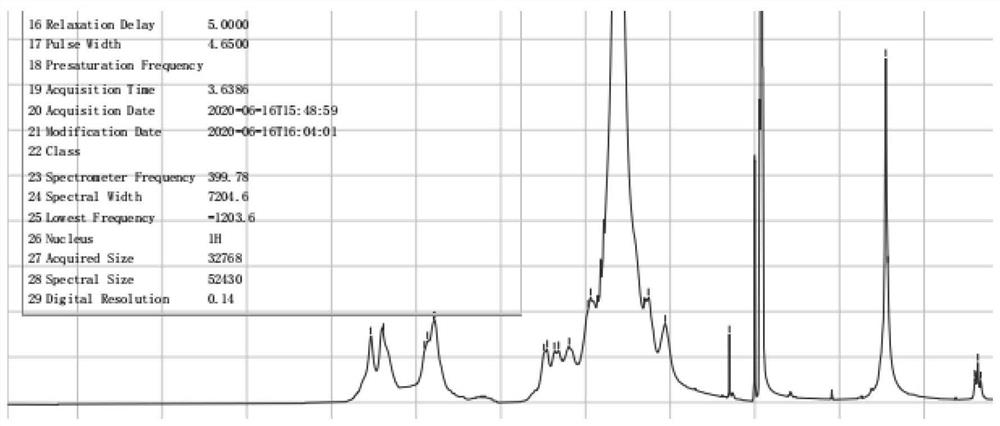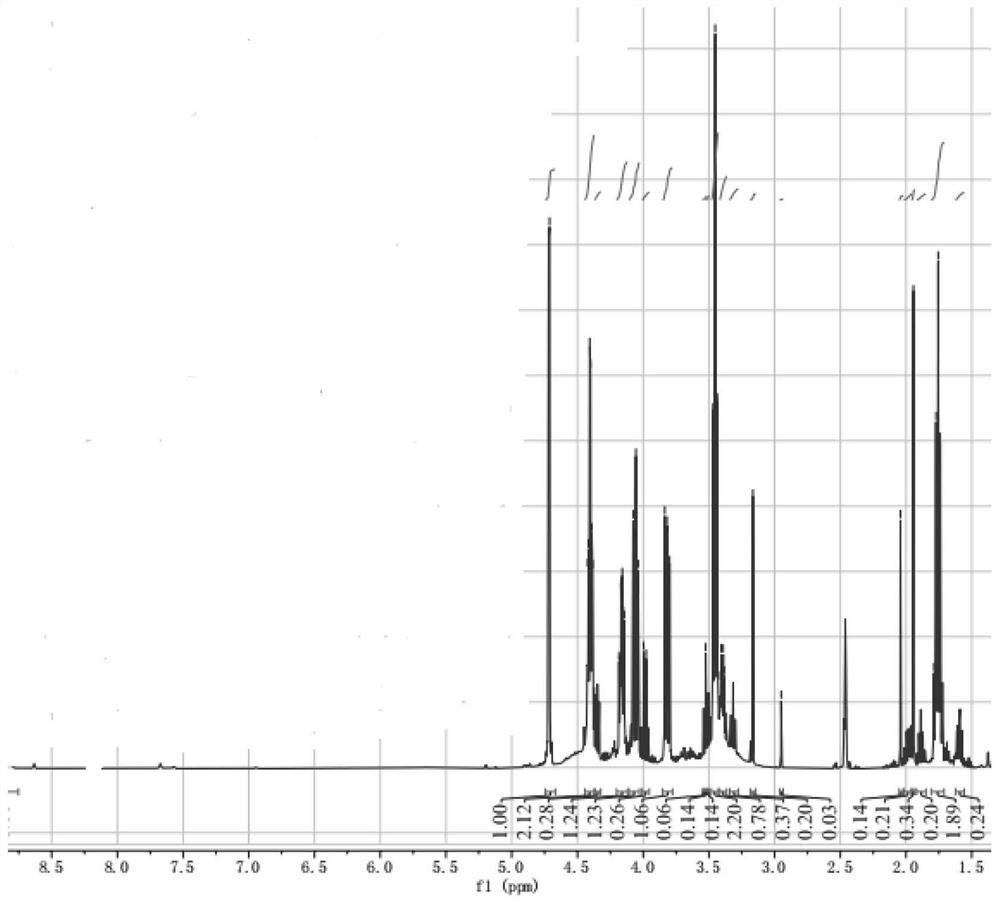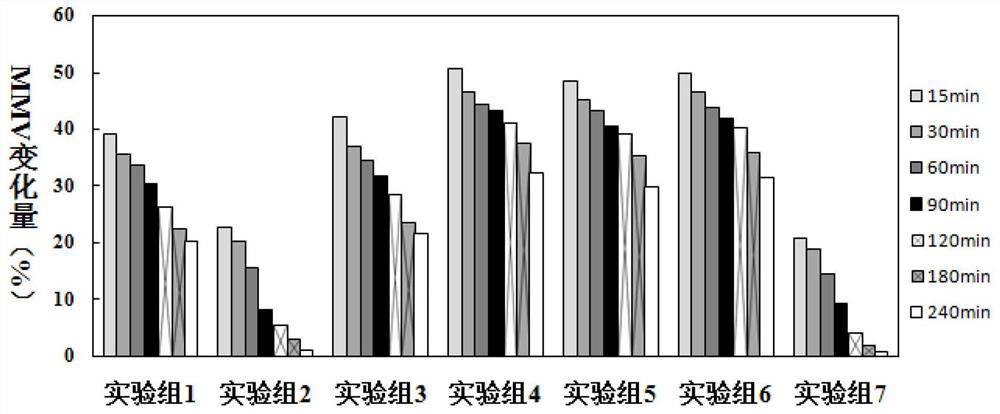L-vitamin C hyaluronate derivative and preparation method and application thereof
A technology of hyaluronic acid ester and hyaluronic acid, which is applied in the field of daily necessities and medicine, can solve the problems of strong irritation, poor permeability, easy yellowing, etc., and achieve the effect of ensuring stability
- Summary
- Abstract
- Description
- Claims
- Application Information
AI Technical Summary
Problems solved by technology
Method used
Image
Examples
Embodiment 1
[0084] The preparation of embodiment 1 hyaluronic acid-CTA salt
[0085] Dissolve 300 g of sodium hyaluronate with a molecular weight of 10 kDa to 100 kDa in 10 L of deionized water and set aside. 300g of cetyltrimethylammonium chloride was dissolved in 6L of deionized water, and then sodium hyaluronate solution was added dropwise. After reacting at 40°C for 16 hours, a white solid precipitated out. Filter and dry the solid at 50-55°C under reduced pressure to obtain the product (yield: 486g).
Embodiment 2
[0086] Embodiment 2 L-vitamin C and bromopropanol etherification reaction
[0087] Under the protection of nitrogen, 211g of triphenylphosphine was added into 500mL of tetrahydrofuran, stirred until it was completely dissolved, and cooled to about 0°C in a brine ice bath. 212 g of 1,2-diiodoethane was dissolved in 200 mL of tetrahydrofuran, and added dropwise to the triphenylphosphine solution. After stirring for 30 minutes, a solid precipitated out. Under nitrogen protection, 50 g of L-vitamin C and 50 g of 3-bromo-1-propanol were dissolved in 300 mL of tetrahydrofuran and added dropwise to the reaction system. After the dropwise addition, the temperature was raised to 20-30°C and stirred for 16 hours. Next, the reaction temperature was increased to 40° C. and stirred for 3 hours, and the reaction was detected by thin layer chromatography (ethyl acetate:ethanol:water=20:10:1) to complete. The reaction system was concentrated until no solvent dripped out to obtain a white...
Embodiment 3
[0088] Embodiment 3 L-vitamin C and bromobutanol etherification reaction
[0089] Under the protection of nitrogen, 230 g of triphenylphosphine was added into 540 mL of tetrahydrofuran, stirred until it was completely dissolved, and cooled to about 0° C. in a brine ice bath. 230 g of 1,2-diiodoethane was dissolved in 250 mL of tetrahydrofuran, and added dropwise to the triphenylphosphine solution. After stirring for 30 minutes, a solid precipitated out. Under nitrogen protection, 55g of L-vitamin C and 60g of 4-bromo-1-butanol were dissolved in 300mL of tetrahydrofuran and added dropwise to the reaction system. After the dropwise addition, the temperature was raised to 20-30°C and stirred for 16 hours. Next, the reaction temperature was raised to 40°C and stirred for another 3 hours. Thin layer chromatography (ethyl acetate:ethanol:water=20:9:1) detected that the reaction was complete. The reaction system was concentrated until no solvent dripped out to obtain a white sol...
PUM
| Property | Measurement | Unit |
|---|---|---|
| molecular weight | aaaaa | aaaaa |
| degree of substitution | aaaaa | aaaaa |
| degree of substitution | aaaaa | aaaaa |
Abstract
Description
Claims
Application Information
 Login to View More
Login to View More - R&D
- Intellectual Property
- Life Sciences
- Materials
- Tech Scout
- Unparalleled Data Quality
- Higher Quality Content
- 60% Fewer Hallucinations
Browse by: Latest US Patents, China's latest patents, Technical Efficacy Thesaurus, Application Domain, Technology Topic, Popular Technical Reports.
© 2025 PatSnap. All rights reserved.Legal|Privacy policy|Modern Slavery Act Transparency Statement|Sitemap|About US| Contact US: help@patsnap.com



